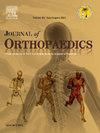患者特异性变量影响关节平衡与2年预后之间关联的敏感性。
IF 1.5
Q3 ORTHOPEDICS
引用次数: 0
摘要
背景:本研究在人口统计学和术前关节平衡定义的亚组中调查术中平衡与2年预后之间的关系。我们的假设是,患者的人口统计学特征和术前关节状态将影响患者对术后平衡和松弛的敏感性以及随后对结果的影响。方法:回顾性分析5位外科医生的5个部位的前瞻性数据。所有病例均完成术前人口统计调查,术后2年膝关节损伤和骨关节炎结局评分(oos),并采用集成数字关节平衡工具的机器人辅助全膝关节置换术。在人口统计学和术前平衡亚组中,对术中最终关节平衡和2年kos疼痛结局之间的相关性差异进行了分析。关联告知临床相关阈值,以优化亚组TKA治疗。结果:276例患者完成2年KOOS评分。亚组根据性别、年龄、BMI和术前伸展松弛度定义。男性更喜欢在伸展和中屈曲中有一个紧密的容忍度,而女性更喜欢一个紧密的侧向屈曲间隙。与术前轻度松弛的患者相比,3mm)的患者更倾向于采用伸展松弛度增加的TKA。结论:术中膝关节平衡的差异会影响术后2年不同人群患者的预后评分。这表明需要进一步的研究来确定如何根据个体患者因素优化韧带平衡和松弛。本文章由计算机程序翻译,如有差异,请以英文原文为准。
Patient specific variables impact sensitivity to association between joint balance and 2 Year outcomes
Background
This study investigates the association between intra-operative balance and 2-year outcomes within subgroups defined by demographics and pre-operative joint balance. Our hypothesis is that patient demographics and the pre-operative state of the joint will impact patient sensitivity to post-operative balance and laxity and subsequent impact on outcome.
Methods
A retrospective analysis of prospectively captured data across 5 sites with 5 surgeons was performed. All cases completed pre-operative demographics surveys, 2-year post-operative Knee Injury and Osteoarthritis Outcome Score (KOOS) and had a robot assisted total knee arthroplasty with an integrated digital joint balancing tool. Differences in associations between intra-operative final joint balance and 2-year KOOS pain outcomes in demographic and pre-operative balance subgroups were characterized. Associations informed clinically relevant thresholds to optimize TKA treatment for subgroups.
Results
A total of 276 patients completed 2-year KOOS scores. Subgroups were defined from Sex, Age, BMI and pre-operative extension laxity. Men prefer a tight tolerance medially in extension and mid-flexion while females prefer a tight lateral flexion gap. Patients <70 years show a strong preference for equal rectangular gaps in extension, mid-flexion, and flexion, while older patients do not show a preference. Patients with BMI ≤30 demonstrate a preference for rectangular gaps, while patients with higher BMI do not. Finally, patients with looser pre-operative extension laxity (>3 mm) preferred a TKA with increased extension laxity compared to patients with minimal preoperative laxity.
Conclusion
Intraoperative differences in knee balance can influence patient outcome scores among different demographic groups at two years postoperatively. This suggests further research is warranted to determine how ligament balance and laxity may be optimized based on individual patient factors.
求助全文
通过发布文献求助,成功后即可免费获取论文全文。
去求助
来源期刊

Journal of orthopaedics
ORTHOPEDICS-
CiteScore
3.50
自引率
6.70%
发文量
202
审稿时长
56 days
期刊介绍:
Journal of Orthopaedics aims to be a leading journal in orthopaedics and contribute towards the improvement of quality of orthopedic health care. The journal publishes original research work and review articles related to different aspects of orthopaedics including Arthroplasty, Arthroscopy, Sports Medicine, Trauma, Spine and Spinal deformities, Pediatric orthopaedics, limb reconstruction procedures, hand surgery, and orthopaedic oncology. It also publishes articles on continuing education, health-related information, case reports and letters to the editor. It is requested to note that the journal has an international readership and all submissions should be aimed at specifying something about the setting in which the work was conducted. Authors must also provide any specific reasons for the research and also provide an elaborate description of the results.
 求助内容:
求助内容: 应助结果提醒方式:
应助结果提醒方式:


